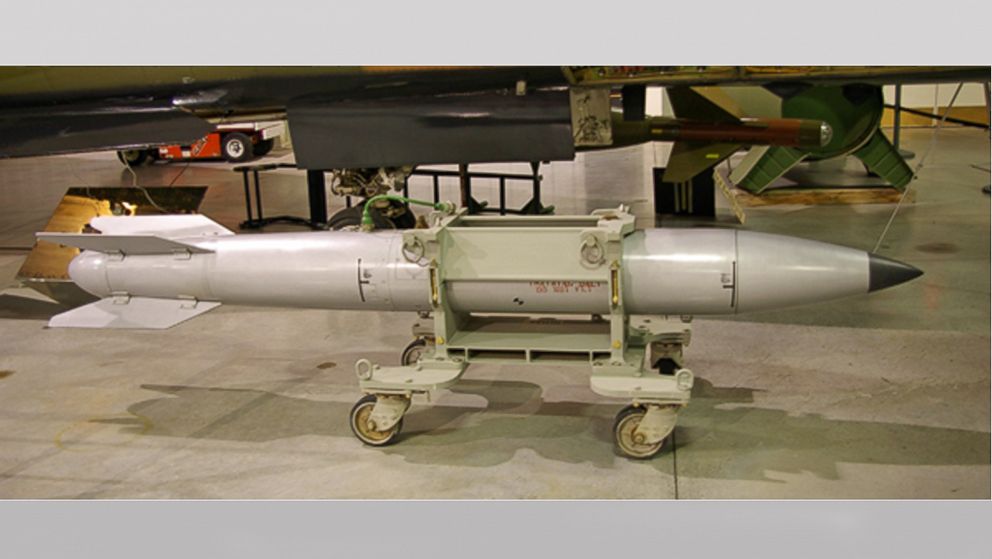US to Turn Old Bombs Into All-Purpose Weapons
Old bombs are expected to be upgraded with enhanced military capabilities.

Nov. 10, 2013— -- The U.S. wants to modernize nuclear bombs stationed in Europe in a way many experts call the equivalent of creating a new weapon. Critics believe the move violates pledges by President Obama he would not develop new nukes.
The idea of fighter jets taking off from Western Europe, thundering their way eastwards and dropping nuclear bombs on Soviet troops is a scenario taken straight out of the Cold War playbook. But while that playbook has long been outdated, American nuclear bombs are still stationed in Europe. In Germany alone, up to 20 B-61 weapons are stored on a German airbase in the village of Büchel in Rhineland-Palatinate.
The German government has said on numerous occasions it would like to see those weapons removed, but there is no great chance of that happening anytime soon. Instead, the weapons are expected to be upgraded with enhanced military capabilities.
Last week, representatives of the U.S. military, the Pentagon and the Department of Energy announced new details about the B-61 program in a hearing in the House Armed Services Committee's Subcommittee on Strategic Forces. The new variant of the nuclear bomb, called the B61-12, is now expected to replace the older types 3, 4, 7 and 10 as well as the bunker-busting B-61-11 and B-83 strategic nuclear bombs. The latter has an explosive power of up to 1.2 megatons of TNT, making it more than 90 times more powerful than the bomb dropped on Hiroshima.
The first B-61-12 is expected to be completed by 2020. By 2024, all the old bombs are expected to be replaced. Then, according to the plan, the new weapons will be deployable using fighter jets like the F-16, the new F-35 and with strategic bombers like the B-2 "Spirit" or the planned new LRS-B bomber.
The German Tornado fighter bombers stationed at Büchel will also be equipped to be able to use the new B-61-12 weapons, but only as analog ballistic glide bombs ("System 1"). The "System 2" weapons will be modern, digital nuclear precision bombs designed for modern digital fighter-bombers like the F-35, the "Joint Strike Fighter". This will be made possible by adding a state of the art new guided bomb Tail Kit Assembly that is being developed simultaneously with the B-61-12 by Boeing. Some 800 of these new tail kits are to be purchased at an expected cost of $1.6 billion.
The U.S. military has high expectations for "System 2". Because of its greater precision, the weapon will require significantly reduced explosive power compared to most of its predecessors. The smallest of the existing B-61s, the B-61-4, has a destructive power of 50 kilotons of TNT, or roughly four times the size of the Hiroshima bomb. Reused and reworked nuclear components will be used for the B-61-12, but the explosive power of the new bomb is expected to cover and securely destroy the same targets that previously weapons with 300, 400 or even more kilotons of TNT might have coped with.
Warnings of a Weapon With New Capabilities
Indeed, experts view the B-61-12 as far more than a pure life-extension program or slightly upgraded version of the old bombs. Instead, they consider it to be, de facto, a weapon with new military capabilities -- a development that would seem to violate the spirit of U.S. President Barack Obama's stated pledge of not creating any new nuclear weapons or ones with new military capabilities.




